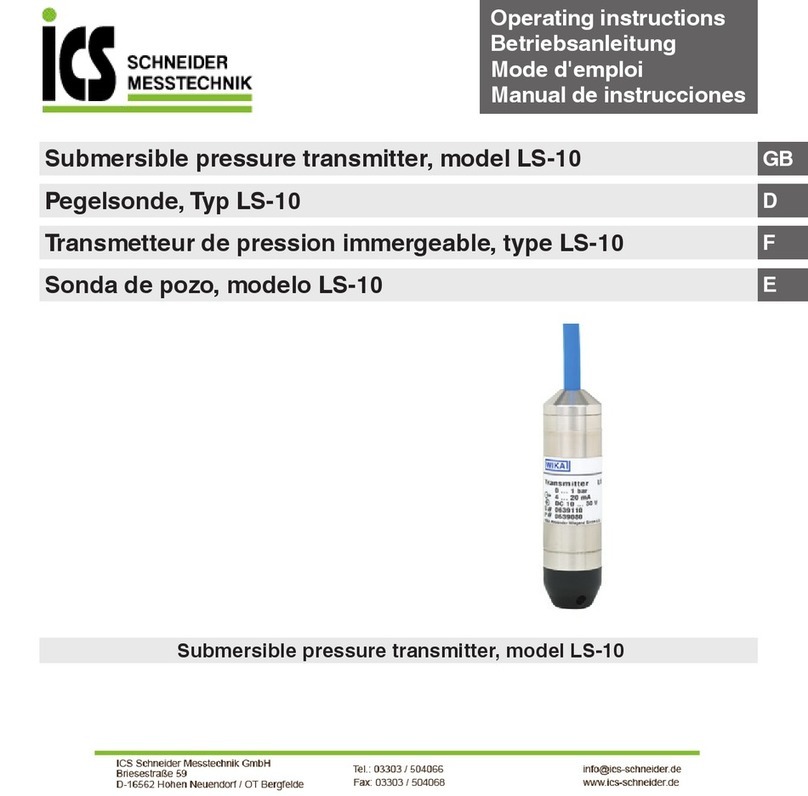
10 WIKA operating instructions submersible pressure transmitter, model LH-10
14075011.03 07/2016 EN/DE/FR/ES
EN
5. Transport, packaging and storage
5.1 Transport
Check the submersible pressure transmitter for any damage that may have been caused by transport.
Obvious damage must be reported immediately.
5.2 Packaging
Do not remove packaging until just before mounting.
Keep the packaging as it will provide optimum protection during transport (e.g. change in installation site, sending for
repair).
5.3 Storage
Permissible conditions at the place of storage:
Storage temperature: -30 ... +80 °C
Mount the protection cap for storing the submersible pressure transmitter, so that the diaphragm will not be damaged.
Avoid exposure to the following factors:
■
Direct sunlight or proximity to hot objects
■
Mechanical vibration, mechanical shock (putting it down hard)
■
Soot, vapour, dust and corrosive gases
■
Humid or wet environment
■
Potentially explosive environments, ammable atmospheres
Store the submersible pressure transmitter in its original packaging in a location that fulls the conditions listed above.
If the original packaging is not available, pack and store the instrument as described below:
1. Wrap the instrument in an antistatic plastic lm.
2. Place the instrument along with shock-absorbent material in the packaging.
3. If stored for a prolonged period of time (more than 30 days), place a bag containing a desiccant inside the packaging.
WARNING!
Before storing the instrument (following operation), remove any residual media.This is of particular
importance if the medium is hazardous to health, e.g. caustic, toxic, carcinogenic, radioactive, etc.
5. Transport, packaging and storage




























